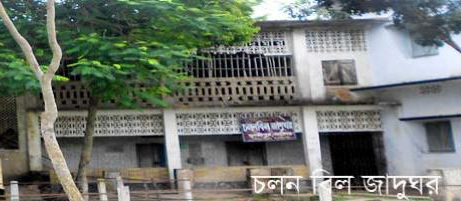-
-
About
Introduce to Upazila
History & Tradition
Geography & Economics
-
Upazila Parishad
Functions and others
-
Upazila Parishad meeting resolution
-
১৭টি কমিটির সভার রেজুলেশন ২০২৪-২৫
-
Resolutions of 17 committee meetings
-
Annual plan
-
Citizen Charter
-
Annual report book
-
five year plan
-
Annual Financial Statements
-
Budget
-
Annual Development Plan 2022-23
-
Fixed and Temporary Assets Register
-
ADP report
-
Organizational structure
-
ADP Report 2021-2022
-
Monthly schedule
-
employees
-
Laws and Regulations
-
Upazila Parishad meeting resolution
-
Administration
Upazilla Nirbahi Officer
About Organogram
Schedule & Meeting
Sservice and others
- Municipality
-
Govt. Offices
Security & Discipline
Health Related
Agriculture & Food
Land Related
Engineering & Communication
Human Resources
Education Related
-
Different Institutions
List of Educational Institutions
Religious Institutions
- Gallery
মেনু নির্বাচন করুন
-
-
About
Introduce to Upazila
History & Tradition
Geography & Economics
-
Upazila Parishad
Functions and others
- Upazila Parishad meeting resolution
- ১৭টি কমিটির সভার রেজুলেশন ২০২৪-২৫
- Resolutions of 17 committee meetings
- Annual plan
- Citizen Charter
- Annual report book
- five year plan
- Annual Financial Statements
- Budget
- Annual Development Plan 2022-23
- Fixed and Temporary Assets Register
- ADP report
- Organizational structure
- ADP Report 2021-2022
- Monthly schedule
- employees
- Laws and Regulations
Administrator, Upazila Council
Chairman, Upazila Council
Vice-Chairman, Upazila Council
Female Vice Chairman
Previous Upazila Council Chairman
Staffs
Organogram
-
Administration
Upazilla Nirbahi Officer
About Organogram
Schedule & Meeting
Sservice and others
- Municipality
-
Govt. Offices
Security & Discipline
Health Related
Agriculture & Food
Land Related
Engineering & Communication
Human Resources
Education Related
-
Different Institutions
List of Educational Institutions
Religious Institutions
-
Gallery
Photo Gallery
Video Gallery
Main Comtent Skiped
Title
Challan Bill Museum
Location
Chalanbil Museum is located in Khubjipur Union of Gurudaspur Upazila.
Transportation
The Chalnibal Museum is located at Khubjipur Union, 4 km north of Gurudaspur Upazila, 50 km east of Natore District Headquarters. Any vehicle can be reached from Gurudaspur Upazila.
Contact
0
Details
Challan Bill Museum Details: Challanbill Museum The museum is located at Khubjipur village in Natore district of Gurmundaspur upazila, in the middle of the country's largest bill-challan bill. It was established on September 1, 1986 by the knowledge-seeking principal Abdul Hamid. The museum is located at a distance of about 5 km from the Upazila Sadar.
The museum aims to build bridges between the past and the future by researching the ancient monuments of the Chalon-sur-Sa অঞ্চne region, retrieving lost history, archeological monuments, archeological sites, inscriptions, terra cotta and preserving specimens of fish, oysters, snails, etc.
In 1981, five kathas of land was officially given for this museum. The museum building was built in 1984-85 with the help of Norwegian donor agency Norida and in 1975-76 with the help of the Ministry of Education. Before it was registered under the government's Department of Archeology and Museums on March 15, 1990, it was run by a private company (local business).
।(Janakantha) 14/11/99 Samat Alamgir and Badsha Nasir Uddin's handwritten Qur'an Sharif along with 15 handwritten three-four year old complete and partial Qur'an Sharif and 15 Hadith Sharif with a large number of scriptures.
There are two Sanskrit manuscripts written on the bark of the tree, manuscripts of more than three hundred years old Manasa Mangal and Satyapir's Panchali and many other manuscripts. Various research books, including statues of the Sun-god Bishut and Martrika on the Kastipathar, coins of 90 countries and the Getty's Bag address of US President Abraham Lincoln (these are now housed in the Regional Museum for preservation).
Stamps, pots, alphabets of Bengali letters, terracotta of different regimes, rocks and ores, various rare objects including leaves of various trees, these precious objects of Bengal's history and tradition are now on the verge of destruction due to lack of resources.
The people claim that the museum will be a unique source of archeological and historical research for future generations only if it is implemented and maintained in full.
Photos
Site was last updated:
2025-08-03 12:09:41
Planning and Implementation: Cabinet Division, A2I, BCC, DoICT and BASIS









